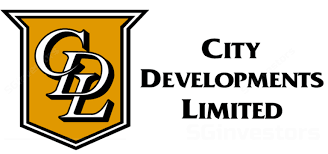Varies trends for land better fee btw suburban & prime condo
The latest rates for land betterment (LBC), announced on February 29th, reflect the stark contrast between suburban and prime condominium markets.
Property analysis shows that the sharpest cut of 19.2 per cent for LBC rates for non-landed residential use was in the Tanglin/Cuscaden area, followed by chops of 18.8 per cent in the Ardmore/Draycott/Claymore area, Orchard, One Tree Hill, Paterson/Lengkok Angsa and Nassim/Orange Grove/Ladyhill/Fernhill areas.
In the Braddell/Toapayoh region, LBC rate increases were 10.7 percent and 14 percent respectively.
A property analyst for Singapore and South-east Asia noted that the polarised performance was a reflection of the different sentiments expressed by suburban and non-suburban areas at the state land tenders held over the past 6 months.
The weaker than expected bids received for Orchard Boulevard’s prime site led to a drop in the prices for the surrounding areas. On the other hand, the stronger-than anticipated bids received for Toa Paoh and Clementi sites resulted in a rise of the prices for their respective sectors.
Newport Residences Pricing will be attractively priced when it is launch in April 2024.
Market watchers say that the divergence is due to a doubled additional buyer’s duty (ABSD), a tax on foreign buyers who purchase private homes in Singapore. The ABSD was increased from 40% in April of last year to 60%. In Singapore, foreigners traditionally have been more active in the market for prime residential properties.
Developers are required to pay an LBC if they want to expand the scope of their projects or enhance the use and value of specific sites. The rates are released twice a calendar year, on Sep 1 and Mar 1, following an assessment by the Singapore Land Authority.
The LBC rates on non-landed residential properties have increased an average of just 0.1 percentage points in the last revision.
LBC rates take into account recent land transactions and are based off the CV assessment of land value. The rates are divided into 118 geographical segments in Singapore, according to the use groups.
In 37 sectors, the rates of non-landed residential LBC have increased. The increases range between 3 and 14 percent. In 27 sectors the rates have been reduced, ranging in size from 1% to 19%. SLA confirmed that rates in the remaining 54 industries were unchanged.
Analyst does not expect that downward revisions in LBC rate in selected geographic sectors will boost the collective residential sale market as there are greater obstacles. Analyst also cited the widening gap between buyer and seller prices, the developers’ lack of risk appetite, and the property cooling measure.
LBC rates are now higher by an average of 3,8% for commercial purposes. This is most likely due to a return in interest from investors for assets with a large commercial component.
Commercial LBC rates have been increased between 3-9 per cent in 104 geographical sectors.
Some property experts attributed this increase to the large retail and office transactions like Far East Shopping Centre. Some property watchers believe that this will dampen sentiment in the short term for commercial collective sale.
LBC rates in the residential sector increased on average by 7.8 %. In 116 sectors the rates rose by 7 to 8 per cent; however, no changes were made in two other sectors.
A property consultancy says that while newly constructed landed houses by boutique developers may be expensive due to high material and construction costs they continue to attract buyers compared with the option of rebuilding older properties themselves.
LBC rates increased in average by 0.7 percent for the use group which includes hotels and hospitals. In 18 of the 100 geographical sectors, rates increased by an average of 5 percent. The areas with the highest increases included Robinson Road, Orchard Street, Orange Grove, and Bugis. Observers say that Singapore’s hotels are enjoying a good level of business, thanks to tourists.
Rates were raised in the average for industrial users by 1.7%. In 42 sectors the LBC rate increased from 3 to 5%. The remaining 76 industries did not change.
Property expert: Chief valuer likely considered performance of overall industrial property market. Rents and prices increased for the 13th consecutive quarterly in Q4 20,23. Also, land transactional proof in the six month period between Sep 1, 2023 and Feb 29, 2020.
LBC rates will remain the same for all places of worship, civic and community institutions. Also left untouched were the rates for other use groups covering open spaces/nature reserves, agriculture and drains/roads/railways.
Land Betterment Charge Act: The Land Betterment Charge Act took effect in August of 2022. Charges for enhancing land value are consolidated into the SLA.
The LBC system replaced the DC, temporary development levy and differential premium systems. The DC Table of Prices was correspondingly renamed the LBC Table of Prices, which continues its half-yearly revisions.
